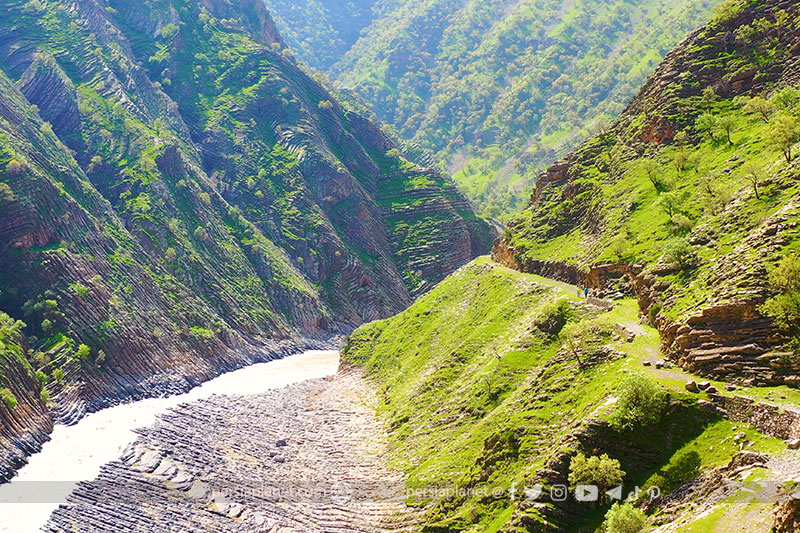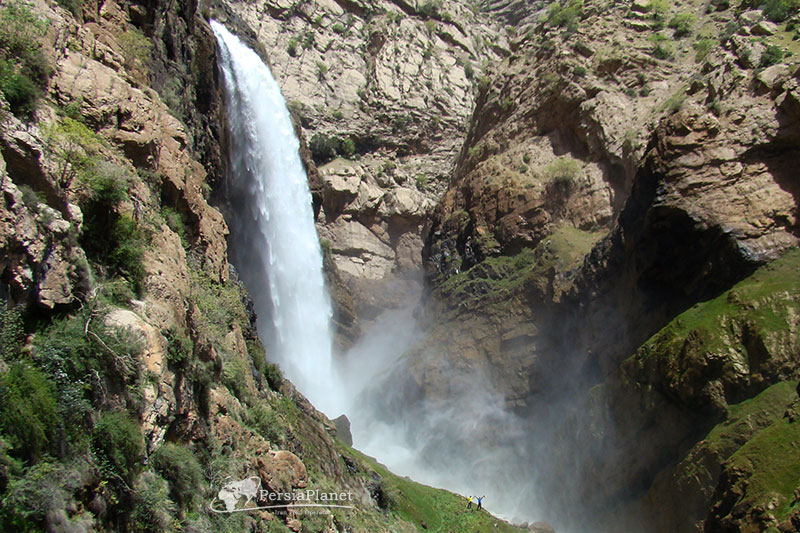Lorestan Shahi road, Jadeh Shaahi

Angoran Salt River, Tang-e Savat
March 11, 2024
Iran National Railway Bridges
May 26, 2024Shahi Road (Jadeh Shahi, Jadeh Shaahi, جاده شاهی، راه شاهی) is one of the important tourist attractions of Iran in Lorestan and Khuzestan provinces. This road is a relic left over from the construction of the national railway, which was built for the purpose of logistics.
Iran National Railway
Iran National Railway is the name of the railway that was built during Reza Shah’s reign and connects Tehran to the Caspian Sea through Turkmen Port (formerly Bandar Shah) and to the Persian Gulf through Imam Khomeini Port (formerly Shapur Port). During the reign of Reza Shah and Mohammad Reza Shah, this railway was expanded and connected Tehran to Gorgan, Semnan, Mashhad, Qazvin, Zanjan, Tabriz, Isfahan, Yazd and Kerman.
The railway was built based on a bill that was approved in the parliament in March 1305 at the suggestion of the then prime minister. Before the construction of this line, 230 kilometers of railway had been built in Iran during the Qajar era.
In the third session of the 44th meeting of the UNESCO World Heritage Committee, with the approval of the members of the committee, Iran’s nationwide railway with a length of about 1400 km was registered as the 25th tangible cultural heritage and the first industrial heritage of Iran in the UNESCO World Heritage List.

Construction of national railway
On the 23rd of Mehr 1306, the first foundation stone of the national railway building was laid in Tehran, the current location of Tehran station, and from that moment on, the construction of the railway officially began from three points in the south, center and north.
Although the history of the construction and successful operation of the first railway in Iran dates back to the Qajar period and the year 1227 solar year (1848 AD) from Rasht to Pirbazar port and Anzali port, the remains of which are still on the way from Rasht to Pirbazar with a steam locomotive in the area of the General Directorate of Ports in Gilan province. There is; The complete realization of this national dream lasted until 1306. The mapping contract for the construction of railway lines was signed with a consortium consisting of the American Yulen company and the German companies Philip Holtzman – Violius Berger and Siemens Bavaunion in 1306 at a maximum price of 368 tomans per kilometer.

Railway supply road or Lorestan Shahi road
On the way of the national railway, a road has been built to transport personnel, equipment and supplies, which is known as the supply road or royal road. The important part of this supply road is built on the mountain road between Durood and Andimeshk stations, which is more than 200 kilometers long.
Today, the Shahi road is destroyed and unusable in many parts. But one of its new uses is to become a tourist and nature tourism attraction where you can walk parts of it and enjoy the scenery.
The Shahi road passes by the side of Sezar river in most of its way, that’s why beautiful views of this river can be seen along the way.

Accommodation and food along the Lorestan Shaahi road
Along the royal road there are several train stations known as local stations. Only two trains stop at these stations. Local stations are a small village, some of which have a small shop. But in general there are no amenities in these stations and you need to carry all your belongings with you.

Travel guide to Lorestan Shahi road
The Shahi road was built between Durood and Andimeshk. But today, this road has undergone many changes and damage. Many parts of this road have been destroyed and it is not possible to visit it.
But it is possible to visit the royal road in different parts of it. This road can be seen in parts between Qaroon station and Shahbazan station.
In some parts, it is possible to visit by car. For example, you can visit parts of this road by car at the country station. But most of the route can only be visited by train or on foot.

Wildlife on the royal road, Raah Shaahi
In many parts of the royal road, it is unspoiled and without human presence. There are small villages along the way, that’s why it has a lot of animal and plant diversity. In this route, you can see all kinds of birds and small and medium mammals. Like fox, jackal, rabbit, squirrel. If you are lucky, larger mammals such as bears and leopards also live in these areas and you can see them.

Vegetation on the royal road
The Shahi road was built in the middle of the Zagros mountain range. This mountain range has a lot of vegetation and oak forests can be seen in major parts of this mountain range. The Shahi road was built in the middle of this thick vegetation, that’s why you can see these forests in many parts of the road.
From the city of Durud to the south, this forest cover increases. In the middle of the path, these forests have the highest density. Then their density is reduced and when reaching Khuzestan province, the number of oak trees is reduced.

The best time and season to travel to Shahi road?
Shahi road is built in a wide area in terms of climate. For this reason, each part of it can be visited at a different time. The northern parts of this road, which is located near the city of Durood, are cold and it is better to visit in the middle of spring. It is better to visit the middle parts at the beginning of spring, and the southern parts located in Khuzestan province are better to visit at the end of spring.

Necessary equipment for travel to Shahi road?
There are no accommodation facilities on the royal road. For this reason, it is necessary to bring camping equipment, including a tent and sleeping bag. It is necessary to bring shoes and a backpack. You must bring food with you.

What is needed for visit Raah Shahi in Iran?
First, you need to have enough knowledge to do. .
Second, you will need camp equipment. Equipment without which it is not possible to stay in nature.
Third, you need to select an experienced team to enter the nature with. Without an experienced team, entering the desert can be very dangerous.

Trekking tours in Shahi road of Lorestan
It is possible to trekking in the Shahi road, which of course requires professional teams.

Iran road tour, best team, guide in Iran?
Contact me to introduce the best desert teams in Iran. Teams with whom you can visit each of Iran’s desert in complete safety. You will also not need to bring desert equipment.





